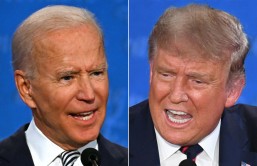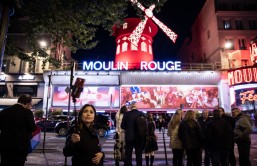Forget trying to elect a woman as the president of the United States. Going by the results of a new report, Americans might just experience the leadership of an Asian or a Hispanic in the next few decades.
Because by the year 2050, a new baby boom of Hispanic, Asian, black and multi-racial children will be taking over the U.S., essentially leading the white population to become a minority, according to Brookings Institution demographer William Frey's new book, Diversity Explosion, which predicts how falling white birth rates and rising birth rates for minorities will bring about a surge of new changes.
Obviously with all the immigration talk surrounding us since the past few weeks, our first thought goes toward the theory that the surge of immigrants will be bringing about this drastic catastrophe on the country. But apparently, the growth will be due to immigrants who are already living here and will be having children, City Lab reported.
"It's kind of a zero-sum population shift for whites. [The white population] isn't growing very rapidly at all. That means any place that gains whites through migration means some other place has to lose them. About 15 states, some 140 metropolitan areas, and more than half the counties in the states are losing whites," Frey said.
Specifically, changes from family structures to economic trends to voting patterns will get affected by the baby boom.
Since there are already nearly as many non-white babies being born as white children, it's only a matter of time before minority children exceed white babies, according to Census Bureau statistics.
It will almost replicate the Baby Boom after the Second World War, except this time it will be minority children that are being born, Frey told the Atlantic.
"Back in the 1950s, we had a lot of Americans across the board in their childbearing years - we had all these babies," he said. "Now, that's really only the case for some of the newer minorities."
And not just the cities, but even suburbs are getting more diverse. For example, while major cities added a population of three million Hispanics, suburbs witnessed a surge of more than eight million between 2000 and 2010, UK MailOnline reported.
"People used to move to the suburbs because they were raising kids and they wanted to have a place that's safe for raising their kids and have good schools. Now, that's the 'new minorities,' that's not whites anymore, and it's helping to make the suburbs a lot more vibrant," Frey said.
Even among black Americans, the population of suburban dwellers is growing. In the last decade, the population of suburban blacks grew by three million and the population of urban blacks shrank by several hundred thousand, according to UK MailOnline.
"It's not just people who are desperate for jobs, these are younger, middle-class blacks who are moving there. Also, we're going to see in the next decade or so, many more African-American retirees who spent their lives in Northern cities will decide when they retire they're going to move to the South," Frey said.
So what will be the implications of all this reshuffling?
"I'd like to think this whole story about the new minority growth in the country is a good news story for the U.S. We're seeing [the implications] in interracial marriages, we're seeing it in how it's affecting the politics of places. They move at different paces in different parts of the country-but it is a moving out and an integration-not only across regions, cities and suburbs, but at the neighborhood level," Frey concluded.
"That's not to say that there aren't going to be some difficult transitions. We've always had difficult transitions when we had new immigrants coming to the U.S."
The detailed graphs and maps of the baby boom can be viewed here.








